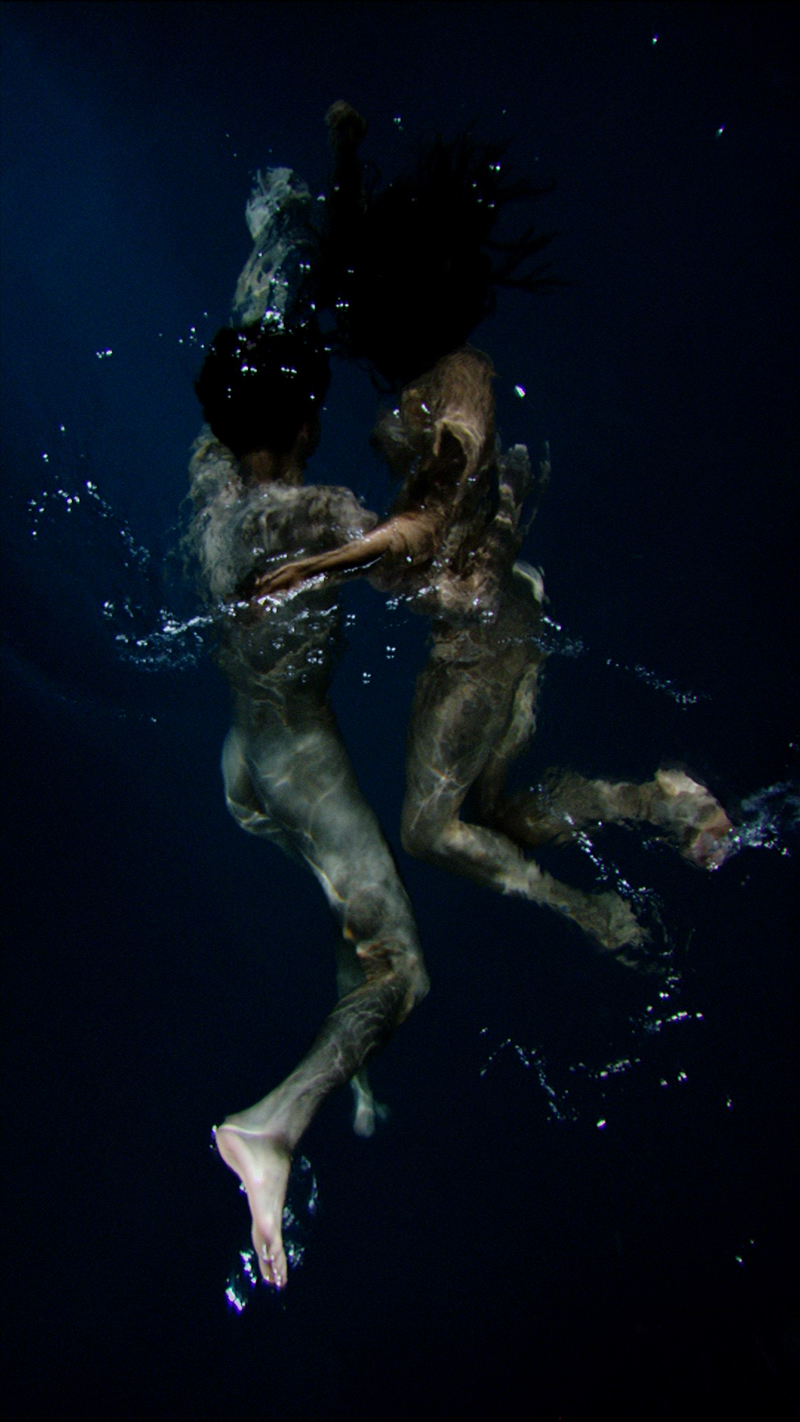With a theatricality apposite to its subject, Bel Canto exploits the rapturous, dolorous and mysterious allure that can make opera, in its premier manifestations, indistinguishable from magic. The exhibition design manages to be both subtle and grand as its labyrinth manufactures an analogy of a night at the opera, first leading visitors into the auditorium and giving them a program. This metaphorical auditorium and program are actually Fratelli d’Italia (2005–17) by Matthias Schaller. Eight cabriole-legged chairs—an implied aisle between them—face a vast wall of 150 identically-sized and composed photographs of Italian opera houses; each chair is supplied a diagram identifying the photograph’s theatre and city. The eerily desaturated images echo the whiteness of the gallery and chairs, suggesting a monument of tradition and enthrallment with opera. The photos, however, are taken from the point of view of the performer onstage, allowing the viewer to become the diva.
In an intimate alcove opposite the Schaller, its tall narrow entrance echoing the ratio of the video monitor, is Bill Viola’s Becoming Light (2005). It renders Tristan and Isolde as all doomed lovers, courting an eternal bond, bodies entwined, locked in an erotic but smothering embrace. The nude figures alternately emerge and submerge, feeding on small mouthfuls of air, eager for their eternal marriage as they slowly sink into the liebestod. This and other Viola videos were used by the Paris Opera in the 2005 and 2018 productions of Tristan and Isolde.
Inspired by Dialogues of the Carmelites, Suzanne Bocanegra’s catalogue of nuns and their habits is hauntingly augmented not by Poulenc’s music but contemporary interpretations of life in a religious order. The dim gallery is ringed by chest-high cases of photographs documenting the uniform habiliments of the various orders; their identifying and varying aprons, cinctures, coifs, tunics and scapulars. Each of the model nuns have their own page from the 1950s manual A Guide to the Catholic Sisterhood in the United States, which are further augmented by Bocanegra. Miniature necklaces, satiny underskirts and lacy sleeves are sewn onto the photographs, restoring an individuality to the women whose identities have been subsumed into a grander stratagem.
The tragic end to this production is appropriately heartbreaking. While each of these artists’ work has an opera associated with it the most direct and encompassing version of that conceit is movingly employed in Yinka Shonibare’s 17-minute video Addio del Passato (2011) from Verdi’s La traviata. Transposing the opera’s plot to an English theme, Shonibare has taken pity on Francis, the long-suffering wife of Lord Nelson, the one-armed hero of Trafalgar and one-eyed public philanderer. Francis, in her empty manor house, pines away for the national hero who will never return. She is stunningly portrayed by British soprano Nadine Benjamin, and her performance is intercut with images of Nelson with his paramour alongside art historical deaths—Wallis’ Chatterton, Manet’s Le Suicidé, and Carducho’s St. Francis. The changing luminosity of the screen washes over us as we watch from a convex banquette, both a ship’s prow and fainting couch, embodying the protagonists’ roles.


